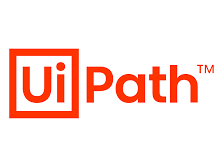Python Full Stack: Unlocking the Power of Versatility and Scalability
Introduction
In the rapidly evolving world of technology, full stack development has emerged as a popular and sought-after skill set. One of the most versatile and powerful programming languages used in full stack development is Python. Whether you are a beginner looking to explore the world of programming or an experienced professional seeking to enhance your skills, understanding Python’s role in the full stack ecosystem is essential. In this blog post, we will delve into the intricacies of Python full stack development, exploring its various components, benefits, and applications. So, let’s dive in!
Understanding the Python Full Stack
What is Full Stack Development?
Full stack development refers to the practice of designing and implementing both the front-end and back-end components of a web application. The front-end, also known as the client-side, deals with the user interface and user experience, while the back-end, or server-side, handles the logic and data processing. Full stack developers possess the skills to work on both ends, providing end-to-end solutions for web development projects.
Python in Full Stack Development
Python, a high-level programming language known for its simplicity and readability, has gained immense popularity in the web development community. It offers a comprehensive suite of tools and frameworks that enable developers to build robust and scalable web applications. Python’s versatility and ease of use make it a top choice for full stack development projects.
The Components of Python Full Stack
Front-end Development with Python
Python offers several frameworks that facilitate front-end development, enabling developers to create visually appealing and interactive user interfaces. One such framework is Flask, a lightweight and flexible micro-framework that allows for rapid prototyping and development. With Flask, developers can easily incorporate HTML, CSS, and JavaScript into their Python-powered applications, creating seamless user experiences.
Back-end Development with Python
Python’s prowess in back-end development is evident through its efficient and powerful frameworks. Django, a high-level Python web framework, is renowned for its scalability and security features. It follows the Model-View-Controller (MVC) architectural pattern, simplifying the development process and promoting code reusability. With Django, developers can effortlessly handle complex routing, manage databases, and handle user authentication, among other functionalities.
Database Integration with Python
To store and retrieve data efficiently, Python offers support for various databases. One popular choice is PostgreSQL, an open-source relational database system known for its robustness and scalability. Python’s integration with PostgreSQL makes it seamless for developers to manipulate data, ensuring smooth interactions between the application and the database.
Deployment and DevOps with Python
Python also shines in the deployment and DevOps aspects of full stack development. Tools like Docker and Kubernetes simplify the deployment process, allowing developers to package their applications and run them in isolated containers or distributed environments. Additionally, Python’s extensive libraries for automation and testing make it a valuable asset in the DevOps workflow, ensuring smooth development, deployment, and monitoring of web applications.
Benefits of Python Full Stack Development
Versatility and Ease of Use
Python’s syntax and readability make it an excellent choice for beginners in programming. Its simplicity allows developers to quickly grasp the language, cutting down the learning curve significantly. Additionally, Python’s versatility enables developers to handle various components of a web application seamlessly, from the front-end to the back-end and everything in between.
Rapid Development and Increased Productivity
With Python’s extensive set of libraries and frameworks, full stack developers can harness the power of pre-built functionalities and code snippets. This significantly speeds up the development process, allowing for rapid prototyping and iterative development. Python’s emphasis on code readability also enhances productivity, making it easier for developers to collaborate and maintain codebases.
Scalability and Performance
Python’s robust frameworks, such as Django, empower developers to build scalable and high-performing web applications. These frameworks handle complex tasks like database management, caching, and request handling efficiently, ensuring optimal performance even with substantial user loads. Python’s scalability is crucial in today’s digital landscape, where web applications must handle increasing traffic and user interactions seamlessly.
Thriving Community and Resources
Python boasts a vibrant and supportive community of developers, constantly contributing to its growth and improvement. Consequently, developers have access to a plethora of resources, including comprehensive documentation, tutorials, and libraries. This supportive ecosystem enables full stack developers to troubleshoot issues, seek guidance, and stay up to date with the latest trends and best practices in Python full stack development.
Conclusion
Python full stack development presents a wealth of opportunities for aspiring and experienced developers alike. With its versatility, simplicity, and robust frameworks, Python empowers developers to create innovative and scalable web applications. By mastering Python’s front-end and back-end components, developers can unlock the power of full stack development and embark on exciting projects that shape the digital landscape. So, embrace the versatility of Python and embark on your full stack journey today!


